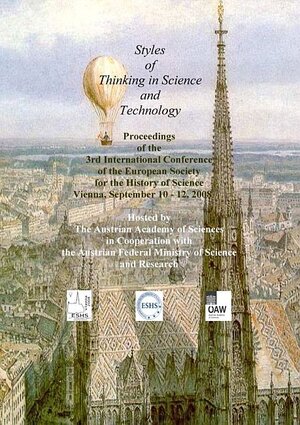Styles of Thinking in Science and Technology
Hosted by the Austrian Academy of Sciences in Cooperation withe the Austrian Academy Federal Ministry of Science and Research
herausgegeben von Hermann Hunger, Felicitas Seebacher und Gerhard HolzerIn 1994, the late Alistair Crombie published his monumental work “Styles of Scientific Thinking in the European Tradition”. As it reads in the publisher’s prospectus, he distinguished between six “styles of inquiry, demonstration and explanation diversified by their subject-matters, by their general conceptions of nature, and by scientific experience”. These inquiry styles included postulation, experimental argument, hypothetical modelling, taxonomy, probabilistic and statistical analysis, and historical derivation. Reconsidering this fascinating subject fourteen years later, this volume expands on the original Euro-centric viewpoint. Which philosophical, cultural, religious, political, economic influences can be identified that led to certain styles of thinking in science and technology in various parts of the world, and what determined their further development? Of special interest in this regard are cross-cultural influences and interrelations. How are traditions of thinking transmitted to later generations or to other cultures? How are they modified through the course of history? The “Third Conference of the European Society for the History of Science” was an opportunity for historians and philosophers of science and technology to examine these and other questions.







